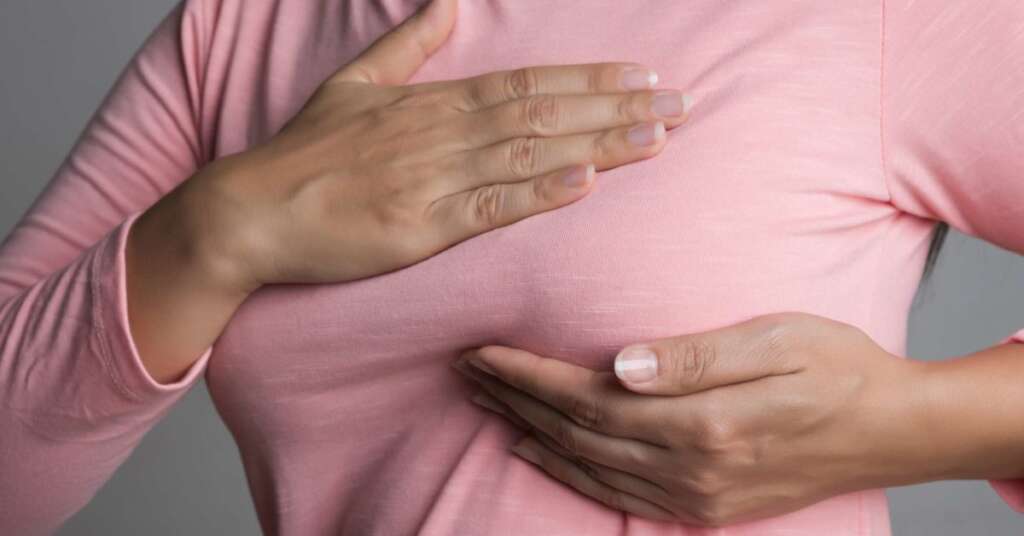Trends
All what you need to know about breast cancer- causes, symptoms and treatment
Breast cancer is cancer that develops in breast cells. Typically, the cancer forms in either the lobules or the ducts of the breast.

Breast cancer is cancer that develops in breast cells. Typically, the cancer forms in either the lobules or the ducts of the breast.
Breast cancer is the most common cancer among women other than skin cancer. Increasing age is the most common risk factor for developing breast cancer, with 66% of breast cancer patients being diagnosed after the age of 55.
Breast cancer survival rates have increased, and the number of deaths associated with this disease is steadily declining, largely due to factors such as earlier detection, a new personalized approach to treatment and a better understanding of the disease.
In this article, we will look at the signs, causes, prevention and treatment of breast cancer
SYMPTOMS
- A breast lump or thickening that feels different from the surrounding tissue
- Change in the size, shape or appearance of a breast
- Changes to the skin over the breast, such as dimpling
- A newly inverted nipple
- Peeling, scaling, crusting or flaking of the pigmented area of skin surrounding the nipple (areola) or breast skin
- Redness or pitting of the skin over your breast, like the skin of an orange
CAUSES OF BREAST CANCER
Doctors know that breast cancer occurs when some breast cells begin to grow abnormally. These cells divide more rapidly than healthy cells do and continue to accumulate, forming a lump or mass.
Cells may spread (metastasize) through your breast to your lymph nodes or to other parts of your body.
Breast cancer most often begins with cells in the milk-producing ducts (invasive ductal carcinoma).
Breast cancer may also begin in the glandular tissue called lobules (invasive lobular carcinoma) or in other cells or tissue within the breast.
RISK FACTORS OF BREAST CANCER
Risk factors of breast factors can be divided into two; Controllable and uncontrollable risks
Controllable risk factors for breast cancer
- Alcohol consumption
- Bodyweight
- Breast Implants
- Choosing not to breastfeed
Uncontrollable risk factors of breast cancer
- Being a woman
- Breast Density
- Reproductive factor
- Getting older
- Exposure to radiation
PREVENTIONS OF BREAST CANCER
While there are risk factors you can’t control, the following are preventions of the breast cancer
Healthy lifestyle– Lifestyle factors can affect your risk for breast cancer.
For instance, women who have obesity have a higher risk of developing breast cancer. Maintaining a nutrient-dense diet and getting regular exercise as often as possible could help you lose weight and lower your risk.
Getting regular screenings– Having regular mammograms may not prevent breast cancer, but it can help reduce the chances that it will go undetected.
Preventive measures- preventive measures your doctor recommends can help reduce your risk of developing breast cancer.
TREATMENT
In general, there are five treatment options, and most treatment plans include a combination of the following: surgery, radiation, hormone therapy, chemotherapy, and targeted therapies
- Chemotherapy– Chemotherapy is a treatment method that uses a combination of drugs to either destroy cancer cells or slow down the growth of cancer cells.
- Hormone Therapy– Hormones like estrogen and progesterone are chemicals produced by glands in the body. Normally, these hormones help regulate body cycles, like menstruation
- Radiation Therapy – Radiation therapy (also called radiotherapy) uses high-energy rays to kill cancer cells. It affects cells only in the part of the body that is treated with the radiation
- Surgery– The most common form of treatment for breast cancer is surgery. This involves removing the tumour and nearby margins. Surgical options may include a lumpectomy, partial mastectomy, radical mastectomy, and reconstruction.
